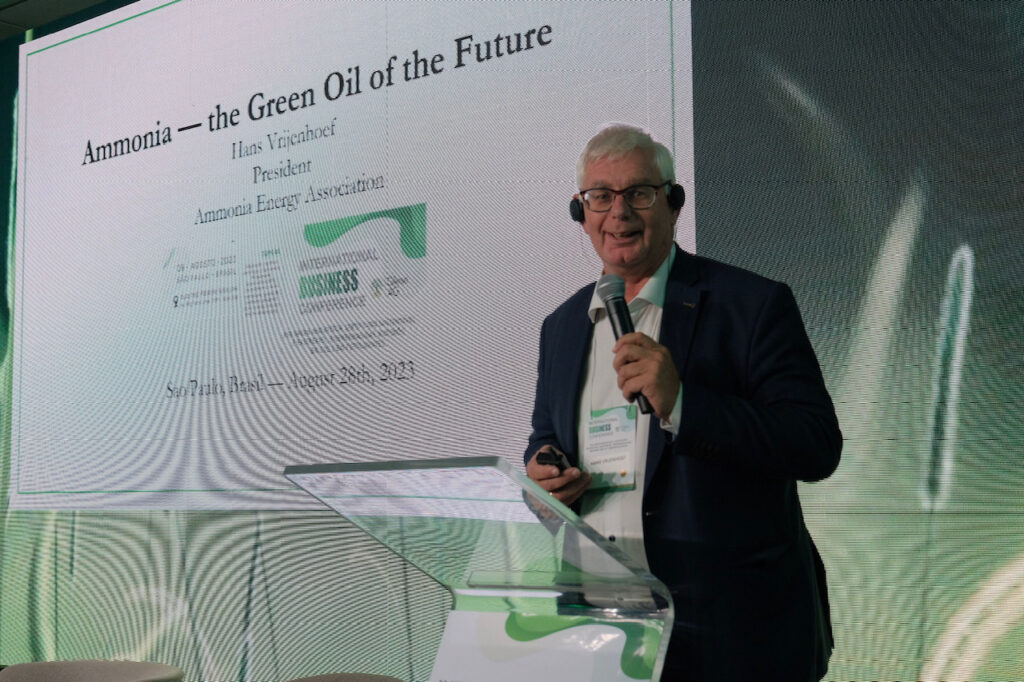Ammonia enthusiasm in Brazil: a message from Hans Vrijenhoef
By Hans Vrijenhoef on September 11, 2023
This summer in the northern hemisphere, it appears that – for many of us – the holiday break was partly or completely destroyed by the forces of nature. Tornadoes, landslides and wildfires are all fresh in everyone’s minds. For those who stayed home, it was an interesting time to start reflecting more on how we can prevent these climate-driven events in future. For sure it’s not an easy task, but the solutions are there.
For local producers of clean ammonia – countries like Brazil, Chile, Namibia, Morocco, Oman, and Australia – a new, equitable income stream will be established, with the potential to expand local businesses using cheap and clean energy. This wealth can be shared across the globe, hopefully reducing political tensions as well.
For this reason, I was visiting Brazil last month on the invitation of the organizers of a Sao Paulo-based conference. While the focus for much of the discussion was the potential for bioethanol fuel in Brazil, the country still needs fertilizers – the bulk of which are still imported. When asked what I thought about new, clean ammonia production in Brazil, I pointed out that it would reduce reliance on imports, create a valuable, new source of fuel and take advantage of existing renewable resources – similar to the production of bioethanol. Further, it creates the possibility to export ammonia from Brazil, especially renewable ammonia. Several export-focused projects have already been announced in the Port of Pecem (Brazilian state of Ceara).
The enthusiasm for new opportunities was shared by the acting President of Brazil Geraldo Alckmin, who appeared virtually at the event. Mr Alckmin is also Minister for Development, Industry and Foreign Trade. He pushed the audience to speed up renewable energy deployment and bioethanol production in a sustainable, cheaper way, and congratulated the audience and speakers with the great vision presented.
In countries like Brazil, a commitment to sustainability principles – in combination with cheap raw materials and a willingness to build – the government is really looking to make a change. And, along with protecting the Amazon against deforestation, Brazil’s government is looking to make farming more efficient and less emissions-intensive, using about the same amount of land. In Brazil, farmers are part of the solution for the climate crisis, whereas the same cannot necessarily be said here in the Netherlands (in fact, it’s become rather a divisive issue at home!). It’s important for everyone to play their part, and for us to utilize skills and experience throughout society.
My next trip is to Chile in October, as part of a delegation from the Dutch government. I hope to see the same momentum and acceptance for ammonia there, and to keep sharing ideas.
On the Netherlands, I have seen some interesting developments recently. A significant complication here is that, as current emissions are already exceeding future targets, the building of new infrastructure such as houses, roads and industrial plant is very much in doubt. But after serious discussion at the Supreme Court in the Hague, the Porthos project has been allowed, realizing some 2.5 million tonnes per year-worth of CO2 sequestration under the North Sea. This sets the precedent that new projects are required to reduce our emissions, and will hopefully provide space for further development – particularly onshore infrastructure. More homes, social infrastructure and transport options will be needed for our population, no doubt resulting in a net-positive outcome for the climate: even if emissions from various sectors temporarily increase.
On the face of it, the enthusiasm on display in Brazil seems more important than nitty-gritty, difficult discussions about infrastructure in the Netherlands. But the truth is both are critical. Momentum & passion will help drive the green transition, but we have to have the difficult conversations and work through disagreements. This is the task facing us in the Netherlands at the moment.
If we stop arguing over minor differences, acknowledge our shared goals and urgently direct significant funds to solve climate issues, we could go fast indeed. Not every government in the world accepts this path (nor indeed certain board rooms), but it is possible. Only then can we reduce GHG emissions in a fast, structured manner, as well as reducing NOx, SOx and other harmful emissions.

